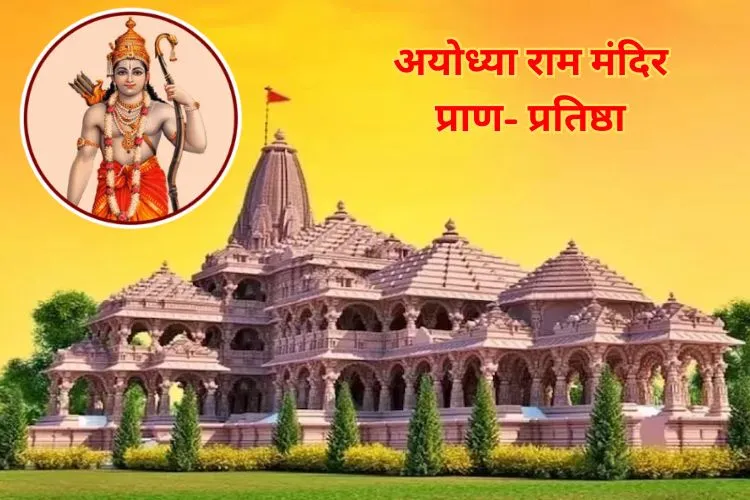यौगिक ध्यान के लिए शुरुआती मार्गदर्शन - Yogic Meditation

योग और ध्यान करने से यह आपकी, ध्यान केंद्रित करने और आराम करने की, दोनों क्षमताओं को बढ़ाता है। ये दो ऐसे अभ्यास हैं, जो आपको ध्यान प्रथाओं का पालन करने में मदद करेंगे। इसे शुरू करने पर इसकी यौगिक मध्यस्थता को समझने की तकनीक का पालन करना थोड़ा मुश्किल हो सकता है, इसलिए हम आपके लिए मार्गदर्शिका लेकर आये हैं, जो आपको अपने जीवन में योग ध्यान की समझ को गहरा करने में मदद करेगी, जिससे आपको एक बेहतर जीवन शैली मिलेगी।
आइए जानते हैं कि योग ध्यान (Yogic Meditation) क्या है और इसका अभ्यास कैसे शुरू करें?
Table of Content
ध्यान क्या है?
योग और ध्यान के द्वारा ध्यानस्थ होने का अर्थ चिंतन करना है। चिंतन आपके द्वारा किये गए विश्वासों का वास्तविक अर्थ बताता है। मेडिटेट शब्द की उत्पत्ति लैटिन शब्द ‘मेडिटरी’ से हुई है, जिसका अर्थ है सोचना या विचार करना। जबकि भारतीय संस्कृति में इसकी योग, ध्यान और क्रिया के रूप में व्याख्या करते हैं, जो बच्चे की शिक्षा में, आपके करियर परिवर्तन या किसी भी दैनिक कार्य के लिए उठाया गया कदम हो सकता है। क्योंकि कोई भी काम बिना विचारे या बिना सोचे नहीं होता है।
हमारी भारतीय संस्कृति में उत्तम पद्धति मौजूद है, जिसे यौगिक ध्यान कहते हैं। यह यौगिक ध्यान आपको हर जीवित वस्तु के संबंधों को समझने में मदद करता है। जबकि योग सूत्र में एक अलग रहस्योद्घाटन है।
योग सूत्र और यौगिक ध्यान
योग सूत्र में ऋषि पतंजलि ने ध्यान के बारे में उल्लेख किया है कि ध्यान और अभ्यास में कौन -कौन से कारक योगदान देते हैं। ध्यान में शरीर को मन की शिथिल अवस्था में लाकर मानसिक स्थिरता का निर्माण करते है। अपनी इंद्रियों को संतुलित रखें, जो बदले में आपके तंत्रिका तंत्र को आराम देेंगी। योग सूत्र में ऋषि पतंजलि बताते हैं कि जब हम आनंद और सुरक्षा की अपनी लालसा को छोड़ना सीखते हैं, तब हम ध्यानस्थ होते हैं, फिर हमारी शांति की खोज बाहर की बजाय खुद के अंदर हो जाती है, तो यह हमें ध्यान के दायरे तक पहुंचने में मदद करती है।
यौगिक ध्यान (Yogic Meditation) में यह कहा गया है कि ध्यान तकनीक, शुद्ध चेतना की स्थिति है। जब ध्यान में आप अपने मन को किसी चीज पर निर्देशित करते हैं, तो आप यह समझ पाएंगे कि आपकी आत्मा और आपके मन के बीच जो संबंध है, उसका कैसे त्याग कर सकते हैं। जब आपके अंदर गहरी जागरूकता पैदा होती है, तब आप अन्य विषयों के बीच का भी अंतर समझ पाएंगे। उदाहरण के लिए, जैसा कि योग सूत्रों में कहा गया है कि दर्द और पीड़ा एकमात्र हमारे दिमाग द्वारा बनाई गईं गलत धारणाएं हैं, इसलिए जब आप आत्मशांति की स्थिति को प्राप्त कर लेंगे, तो आप अपने इस थकावट और दर्द को स्वयं ही अपने मन से अलग कर पाएंगे।
यौगिक ध्यान (Yogic Meditation) का पालन करने के 5 अलग-अलग तरीके
शारीरिक संवेदना और इससे जुड़े विवरण
सांस लेने की तकनीक और ध्यान के योगी
टकटकी लगाए और अपनी खुद की कल्पना बनाएं
फोकस के बिंदु को बढ़ाने के लिए ध्वनि का उपयोग
विज़ुअलाइज़ेशन और कल्पना की शक्ति
1. शारीरिक संवेदना और इससे जुड़े विवरण
शारीरिक संवेदना को देखना और उसके साथ स्थगित किए गए विवरणों पर ध्यान देना यौगिक ध्यान (Yogic Meditation) का दुर्लभ लाभ है। यौगिक ध्यान तकनीक के अभ्यास के दौरान सांस लेते समय सांस के अवलोकन के साथ उसके विवरण पर अपना ध्यान केंद्रित कर सकते हैं। अब अपनी संवेदना को गहराई से देखें और अपने ध्यान को इसी ओर आकर्षित करें। इसमें सांस के अलावा अपने हाथों का तापमान, माथे का पसीना या फिर किसी चुभन पर भी ध्यान केंद्रित कर सकते हैं।
निरंतर अभ्यास और यौगिक ध्यान तकनीकों का पालन करने से आपको ध्यान और सकारात्मकता प्राप्त होगी, जो आपकी संवेदनशीलता को बढ़ाती है। इससे आपकी रीढ़ की हड्डी के साथ-साथ आपके निचले शरीर की ताकत भी बढ़ती है। यदि आपके मन में कोई दुविधा है या भावनात्मक अस्थिरता है, तो यौगिक ध्यान आपको इसे समझने में मदद करता है। शारीरिक संवेदना देखना चुनौतीपूर्ण कार्य है इसलिए शुरुआत करने वाले लोग बिखरे हुए विचारों के दिमाग में आने से पहले मंत्र, जप और ध्वनि जैसी सरल ध्यान तकनीकों पर ध्यान केंद्रित करें।
2. सांस लेने की तकनीक और ध्यान योगी
यदि आप अपनी सांस को फोकस के बिंदु के रूप में उपयोग करते हैं, तो इस प्रकार के यौगिक ध्यान के दौरान आप आसानी से उस बिंदु पर ध्यान केंद्रित कर सकते हैं, जहां आपके शरीर में ही परिवर्तन हो रहे हैं। इस प्रकार अपने शरीर में हो रहे बदलाव पर निगरानी रखना आसान हो जाता है। प्राणायाम करते समय अपनी सांसों को गिन कर भी इस यौगिक ध्यान तकनीक का अभ्यास शुरू कर सकते हैं। इस अभ्यास में पूर्ण रूप से सांस का निरीक्षण करते हैं।
यौगिक ध्यान (Yogic Meditation) में श्वास का अवलोकन जब ध्यान का एकमात्र बिंदु बन जाता है, तब आपका हर उस अनुभूति पर ध्यान केंद्रित होगा, जो यह प्रक्रिया पैदा करती है। साथ ही आपको यह भी पता चलेगा कि यह आपके शरीर में किस प्रकार चल रही है। इसके अलावा आप हवा के तापमान और हवा की गुणवत्ता को भी महसूस कर पाएंगे। अब जब आप सभी समस्याओं से अवगत हो गए हैं, तो आप एक बेहतर जीवन शैली की संभावनाओं को स्वीकार करने का प्रयास करें। आपके द्वारा खोजी जा रही जानकारी अच्छी या बुरी हो सकती है, लेकिन ध्यान आपको उन बुरी जानकारी के अनुरूप आपके अस्तित्व और व्यवहार का अनुचित कारण नहीं बनने देगा।
3. टकटकी लगाएं और अपनी खुद की कल्पना बनाएं
हर कोई कल्पना करता है, आप अपनी कल्पना का सर्वोत्तम उपयोग करें। अपने आस-पास की वस्तुओं पर खुली नजर रखें। इस फोकस को यौगिक ध्यान में दृष्टि के रूप में जाना जाता है, जिसका अर्थ है किसी निश्चित घटना या वस्तु को देखना। एक मोमबत्ती को जलाने के बाद उसकी टिमटिमाती और आग की लपटों का अध्ययन करना यौगिक ध्यान का एक लोकप्रिय रूप है।
आप इस यौगिक ध्यान (Yogic Meditation) में या तो अपनी आंखें पूरी तरह से खुली रख सकते हैं या पूरी तरह बंद रख सकते हैं। हठ योग ग्रंथ विशेष रूप से हठ योग के अष्टांग संप्रदाय में टकटकी लगाने वाले बिंदुओं को देखने पर जोर देता है।
मानक ध्यान के लिए आप अपनी भौंहों के बीच भी टकटकी लगा सकते हैं या ध्यान केंद्रित कर सकते हैं।
4. फोकस के बिंदु को बढ़ाने के लिए ध्वनि का उपयोग
यौगिक ध्यान साधना के अभ्यास के दौरान मंत्रों का प्रयोग ध्यान के बिंदु को समझने में मदद करता है। मंत्र शब्द में “मं” का अर्थ है चिंतन और त्रा का अर्थ है साधन। मंत्र को जपने की क्रिया को जप कहते हैं। मननशील प्रार्थना के लिए मंत्र का अभ्यास करने वाले व्यक्ति का मन और मंत्र से सचेत जुड़ाव होना चाहिए।
यौगिक ध्यान (Yogic Meditation) में मंत्र का जाप करना, ध्यान की स्थिति में प्रवेश करने का एक शक्तिशाली तरीका है। जितनी देर आप जप करते रहेंगे, उतनी देर आप उसी लय में खुद को ध्यान में शामिल कर पाएंगे। पश्चिमी परंपरा, मंत्रों और भजनों के उपयोग का अनुसरण करती है, जिसमें देव मंत्र शामिल होते हैं। यह व्यक्ति को आध्यात्मिक ऊर्जा और प्राचीन भारत की परंपरा पर ध्यान केंद्रित करने के लिए प्रेरित करने में मदद करता है। साथ ही ध्यान में शामिल व्यक्ति की जागरूकता की स्थिति बढ़ जाती है।
प्राचीन काल से ही योग ध्यान के परिणामों को बढ़ाने के लिए ध्वनि का उपयोग किया जा रहा है। ऋषि – मुनियों ने हमें सिखाया है कि कैसे ध्वनि ऊर्जा की व्याख्या के माध्यम से किसी की जागरूकता को बाध्य किया जा सकता है। उदाहरण : प्राचीन काल में ऋषियों का मानना था कि “ॐ ” ध्वनि ही सभी ध्वनियों के लिए सृष्टि में बीज की तरह है। यही सृष्टि की पहली और अंतिम ध्वनि है। कई शोध में यह भी देखा गया है कि संस्कृत के श्लोक और उन श्लोकों का जप करने वाले व्यक्ति पर आध्यात्मिक और सकारात्मक प्रभाव पड़ते हैं। कुछ लोगों के लिए मंत्र उच्चारण आसान होता है , जबकि कई लोगों के लिए नहीं, क्योंकि यह आपके निरंतर अभ्यास पर निर्भर करता है। यदि आप बोलने में सक्षम नहीं हो पा रहे हैं, तो मंत्रों के ऑडियो संस्करण का उपयोग कर ध्यान केंद्रित कर सकते हैं। आप मंदिरों में या फिर किसी समूह में मंत्र जप करने का प्रयास कर सकते हैं। जब यौगिक ध्यान में भाषा, संस्कृत की शक्ति और दैनिक जीवन शैली की गतिविधियों का पालन करेंगे, तो आपको प्रभाव जल्दी महसूस होने लगेगा।
5. विज़ुअलाइज़ेशन और कल्पना की शक्ति
विज़ुअलाइज़ेशन अपने आप में ध्यान करने का एक अद्भुत तरीका है। यौगिक ध्यान (Yogic Meditation) की शुरुआत करने वाले नौसिखियों के लिए यह सबसे अच्छे तरीकों में से एक है। परंपरागत रूप से यौगिक ध्यान के लिए एक ध्यानी को अपने देवता या उसके उद्देश्य की कल्पना करनी होती है, लेकिन ध्यानी अगर देवता की किसी संभावना पर कल्पना करना चाहता है, तो कर सकता है।
दुनिया में ज्यादातर लोग जो यौगिक ध्यान का अभ्यास करते हैं, वे अपने आस-पास मौजूद प्राकृतिक वस्तुओं की कल्पना करके अपने चारों ओर की ऊर्जा पर ध्यान केंद्रित करते हैं। इसके अलावा आप अपने आस-पास रहने वाली ऊर्जा के रूप, रंग, वास्तु, सागर, झील, मनोरम दृश्य, अपने आस-पास के लोगों की आभा और अपने शरीर के अंगों के चक्रों की भी कल्पना कर सकते हैं।
अंत नोट:
नौसिखिये के तौर पर जब आप यौगिक ध्यान (Yogic Meditation) का अभ्यास शुरू करते हैं, तो लंबे समय तक एक ही जगह पर स्थिर बैठने में आपको असहज महसूस हो सकता है। तो इसे छोड़े नहीं, बल्कि आप हमेशा निरंतरता पर ध्यान केंद्रित करें और समय को दिन- प्रतिदिन थोड़ा थोड़ा बढ़ाएं। इससे आपमें धैर्य और शांति का स्तर उत्पन्न होगा, जिससे आपको ध्यान करने में मदद मिलेगी और आपकी चिंताएं कम होंगी।
सर्वोत्तम परिणामों के लिए ध्यान अभ्यास का प्रयास करें या फिर अभ्यस्त योगियों से मार्गदर्शन प्राप्त कर सकते हैं। यह आपको अधिक प्रगति प्राप्त करने में मदद करेगा।




